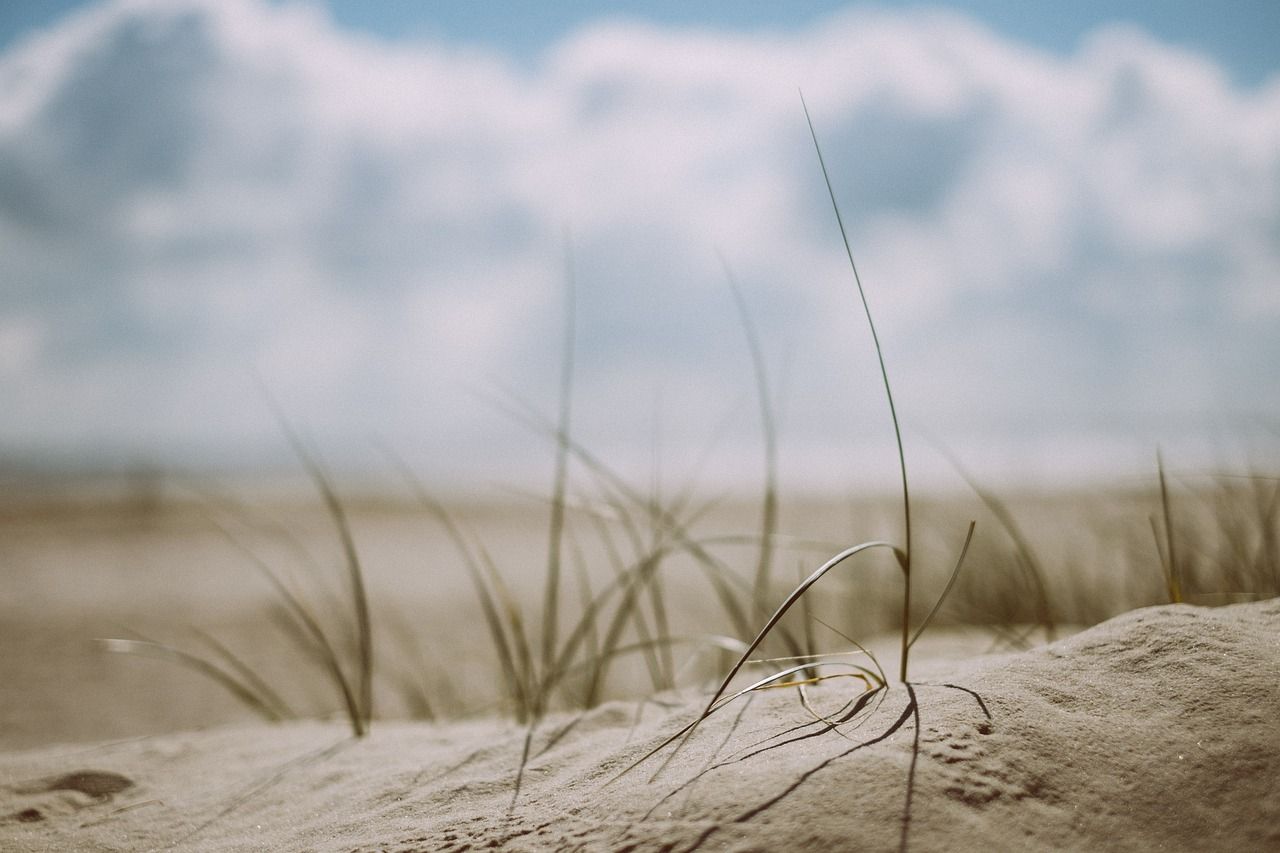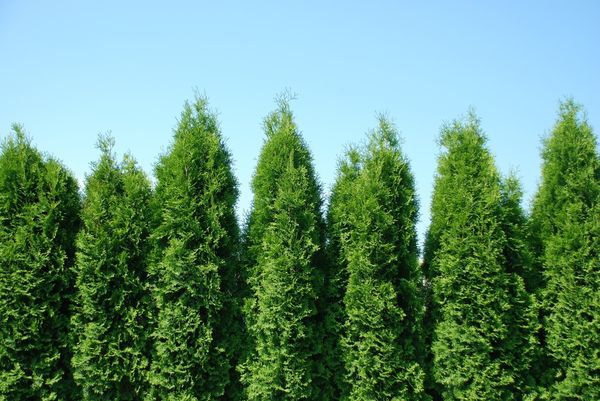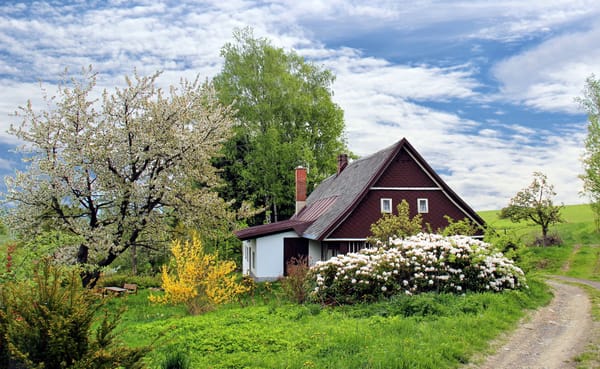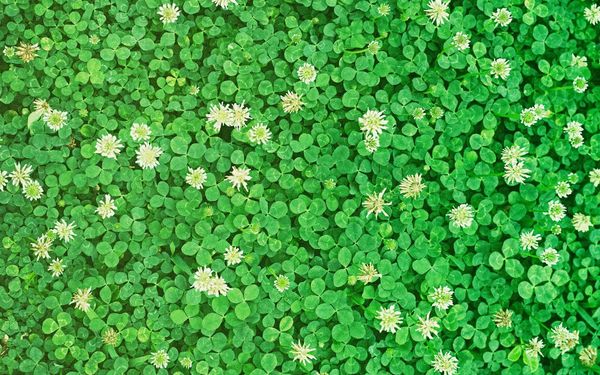You'll be acquainted with sandy, grittier dirt if you're one of the millions living in the desert or coastal areas. Growing anything in soil mainly composed of infertile sand may be difficult, especially when the usual lack of rainfall is added to the mix. In these regions, drought-tolerant landscaping has gained a lot of popularity. What if, however, you wanted to cultivate grass? Sand-filled soils, and through it, will grass grow?
Certain grasses that can tolerate sand will flourish in this sort of setting, especially if nutrient amendments have been made to the soil. And such a green, luscious grass! Many golf course greens by the ocean are located on severely sanded ground. So, with a few easy techniques, it is possible.
Which is better for growing grass: in sand or soil?
Because the soil has more natural nutrients than sand, turfgrasses like St. Augustine or centipede will grow better in the ground than sand. And it's capacity to keep the area surrounding the roots wet. Pure sand is not capable of this.
However, thicker soil needs the proper drainage necessary for healthy wild grasses and lawns. This often contributes to the failure of sod and grass sowing. Success will result from utilizing soil and sandy loam in an 80/20 ratio.
Benefits of Sand for Grass Growth
Sand might be helpful in sod installation and grass care procedures. For instance, while leveling off uneven surfaces. Using some sand can gradually enhance drainage and aeration in soil with a high clay component. Adding grit or fine gravel is also worthwhile to improve drainage.
Sand, however, cannot hold onto moisture or nutrients by itself. Season after season, adding too much will only make your grass less healthy and vibrant.
Sand Soil Grass Seed Germination and Growth
In sandy soil, several grass seed kinds will sprout and flourish. These kinds demand a base that drains appropriately and doesn't fare well with damp roots. Bentgrass, zoysia, and creeping red fescue are a few of them. We'll go into more depth about each of them soon. You may determine if your soil needs to be treated by testing to identify any existing nutrients.
Benefits of Topsoil or Compost Added to Sandy Soil
Sand-tolerant grasses still need much moisture to be lush and proliferate. The top 4-6 inches of your sandy foundation may be amended with well-rotted compost (without any fillers) or high-quality topsoil to increase moisture and nutrient retention as well as the fertility of the soil over time. You are creating a space where your grass will flourish for many years.
Putting Grass Seed over Sand
Putting sod down over sand may be a simple technique to get the appearance of established grass. However, it will only live for a short time unless the soil is sufficiently amended before installation to meet the demands of your investment.
The pH of the soil will rise as a result of soil improvement, as was already explained. I am enabling you to cultivate perhaps later-generation grasses that wouldn't have thrived otherwise. A soil test kit may help you figure out the acidity of your soil so you can adjust it as needed.
Grass Growth Using Sand Top Dressing
Sand topdressing on lawns has been a common technique for many years. When properly put, a light covering of large-grain, coarse sand can enhance drainage and aeration and enable grass to grow through.
Fine sand granules shouldn't be used since they may quickly fill up air spaces in the soil and encourage a moist top layer, which can lead to the failure of new grass.
This method is often favorable on grass that doesn't develop thatch. It is a layer of live and dead plant matter that accumulates organically over time. A barrier that prevents nutrients and moisture from reaching the roots may be formed by topdressing thatching grasses.
Sand Quantity Needed for Topdressing Lawns
As a general guideline, topdress your grass by applying 14" of sand to a depth of 10mm. This is much more effective when you aerate the grass before treating it with something as basic as a pitchfork. As a result, the holes may be filled with coarse sand, improving the soil and encouraging robust development.
Advantages of Sand as a Lawn Top Dressing
Sand's inherent structure makes it ideal for breaking up hard clay or silt loams. Promoting drainage and aeration that enhance root growth and stop root rot for a flourishing, healthy lawn. Remember that regular topdressing might eventually work against you rather than for you.
But this may be optional if you reside in a desert or a coastal area. All of that naturally sandy soil may already be helping you.
Which Sand Type is Best for Lawns?
The best kind of sand to use as a top dressing or as a leveler when laying sod is sharp sand. Sharp sand, which differs from beach sand with rounded edges and is coarser in texture, is often utilized in large quantities in clay loams to modify the soil before sowing.
Additionally, typical are river sand and masonry sand. However, river sand should be cautiously utilized since it often contains weed seeds.
Can Grass Grow Through Sand?
Grass will grow through sand just as it would through top dressing as long as it has access to enough moisture and nutrients.
These can't be produced by sand alone, so it's best to modify sand-heavy soil by putting in compost or nutrient-rich topsoil and often feeding with an all-purpose lawn fertilizer like Simple Lawn Solutions Lawn Energizer.
In addition to enhancing the density and vigor of grass growth, this also adds micronutrients like nitrogen and iron to the soil.
These can't be produced by sand alone, so it's best to modify sand-heavy soil by putting in compost or nutrient-rich topsoil and often feeding with an all-purpose lawn fertilizer like Simple Lawn Solutions Lawn Energizer. In addition to enhancing the density and vigor of grass growth, this also adds micronutrients like nitrogen and iron to the soil.
Additionally, certain grass kinds are far more successful than others. Grass species like bahiagrass, bermudagrass, and bentgrass grow well in sandy, well-draining soil. These will be covered in more depth shortly.
Sanding to Prevent Grass Growth
Some weeds and grass species are survivalists by nature. They are aggressively expanding and increasing via several channels. Sand doesn't provide any nutrients or moisture retention for plants, but sadly, it won't stop tenacious weeds or wild grasses from sprouting.
Garden mesh and polymeric sand are often used to screen sunlight from existing plants and prevent new seeds from embedding themselves in the spaces between pavers, preventing the development of these regions.
Grass Seed Varieties That Grow in Sandy Soil
As long as the sandy soil has been altered to fulfill drainage and nutritional needs, most grass species may grow there. But doing so may be incredibly expensive, time-consuming, and labor-intensive. Your best option is to plant native grasses if you are in a region with typically sandy soil—People who have evolved to prosper in arid or coastal environments.
Five grass species—Fescue, Zoysia, Bermudagrass, Bentgrass, and Bahiagrass—form deep root systems to receive and absorb nutrients and water more efficiently. Let's examine each category in greater detail.
Fescue
The drought conditions often seen in sandy deserts and coastal areas have proven this coarse, thick grass highly durable.
Fescue red and tall kinds are perfect for regions shaded by giant trees or buildings since they don't need much sunshine to grow. The maximum hardiness is shown by creeping red fescue when cultivated in the sand. Moreover, it grows slowly, requiring less mowing.
Zoysia
This thick, "curly" sod, native to island terrains, includes a significant amount of natural silica. It can access and hold onto moisture inside each blade for a more extended period when combined with a deep-reaching root system. It reduces environmental stressors, including pests, disease, nutrient-poor, sandy soils, heat, and drought.
It will change color with the seasons in colder places since it is a perennial grass. In the spring, go back to vivid green.
Bermuda Grass
A well-known, perennial turf, Bermuda grass can thrive in practically any kind of soil.
These gray-green blades have shown to be very tolerant of all moisture levels, from drought to floods, and love the well-draining qualities of sandy soil. Winters may be very cold or extremely hot and dry. However, in humid, damp settings, it grows best.
Bentgrass
The excessively sandy soil of coastal places is quite favorable for this creeping perennial, and may grow there quickly. Sand offers the type of well-aerated substrate that is ideal for long, thin blades.
Because its roots are deeper than those of zoysia or fescue, it could need more irrigation in regions with little rainfall. But it can give you the same type of luxuriant, emerald turf that many coastal golf courses provide.
Bahiagrass
The most resilient plant on our list, this deep-rooted perennial thrives in sandy, nutrient-deficient soil. It is low-maintenance, low-growing, and tolerant to cold and hot regions.
Its flat blades become thick and coarse to endure the severe temperature decreases in northern winters. Bahiagrass makes it simple to grow grass in difficult, sandy areas.
Conclusion
Centipede grass and zoysia grass seed are among the warm season grasses that possess the resilience to thrive in sandy soil conditions. Not only do these species of grass develop a deep root system that enables them to withstand loose soil structures, but they are also adept at nutrient uptake in such challenging environments. As a homeowner, if you plan to plant grass seed in a sandy yard, these grass types should top your list.
Tall fescue grass is another species known to withstand sandy soils. It establishes deep roots, allowing it to adapt to the soil's loose consistency while accessing water and nutrients efficiently. Unlike warm season grasses like centipede and zoysia, tall fescue grass is a cool-season species, making it a viable option for regions with colder climates.
When managing sandy soil conditions, remember that the key to successful growth lies in choosing the appropriate grass seeds for your specific environment. Whether it's the warm season centipede grass, zoysia grass seed, or the cool-season tall fescue grass, your selection should be based on the species' ability to develop a deep root system in loose soil. With these options, you can create a lush, green lawn even in sandy soils.






